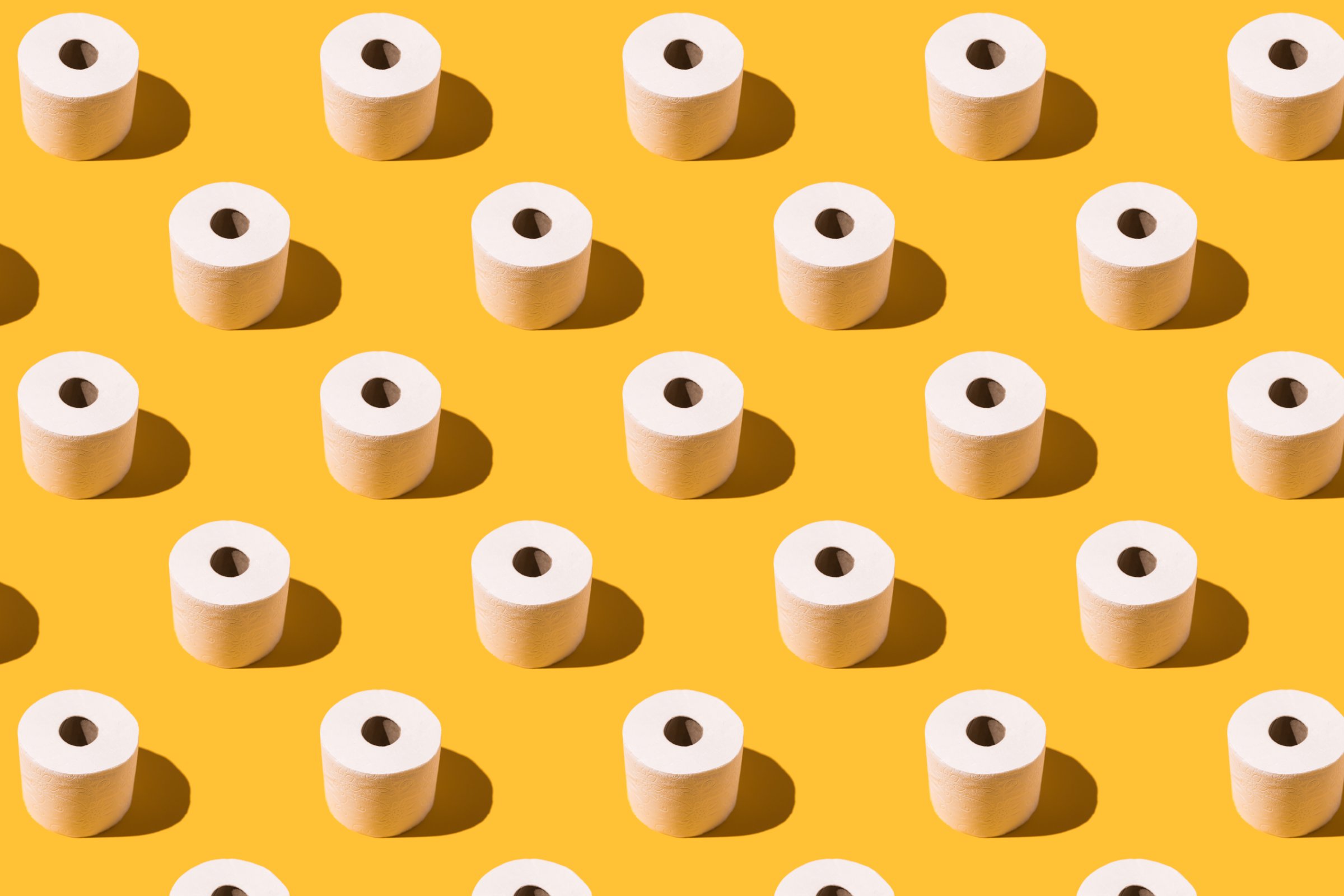
In case you’re counting, the average American will go through 26 kg (57 lbs) of toilet paper in a single year. Multiply that by the 332 million people in the U.S. and you get more than 19 billion pounds of waste paper being flushed away annually. All by itself that represents a massive disposal and sanitation challenge.
But now, according to a paper just published in Environmental Science & Technology Letters there’s even more reason to be concerned: All of that toilet paper, including major brands sold around the world, turn out to be yet another source of PFAS, short for per- and polyfluoroalkyl substances. Also known as “forever chemicals,” these ubiquitous manufacturing chemicals have been linked by the U.S. Environmental Protection Agency (EPA) to a range of health ills, including, decreased fertility, hypertension in pregnant people, increased risk of certain cancers, developmental delays in children, low birthweight, hormonal irregularities, elevated cholesterol, reduced effectiveness of the immune system—leading to decreased efficacy of vaccines—and more.
PFAS are found pretty much everywhere: in soaps, shampoos, cleaning products, clothing, food packaging, plastics, firefighting foam, carpeting and, as recent studies have revealed, in menstrual products, including tampons, pads, and period underwear. The chemicals contaminate the soil surrounding manufacturing plants and have been detected in the water supply—at least in communities that bother to look. There is no national mandate that water supplies be screened for PFAS, but the chemical’s presence in toilet paper provides one more route it can take into groundwater, drinking water and, eventually into us. And it’s not as if we or other creatures need another exposure route. PFAS have already been detected in wildlife, human blood, and breastmilk.
The new study, led by Timothy Townsend of the department of environmental engineering sciences at the University of Florida in Gainesville, sampled both commercially available brands of toilet paper and wastewater sludge, looking for the presence of 34 different types of PFAS. They drew their samples of both paper and sewage from four regions around the world: North America, Africa, South and Central America, and Western Europe.
There was little question that PFAS would turn up in toilet paper. Different forms of the chemical are routinely used in paper manufacturing, serving as wetting agents to increase the efficiency of the pulping process. In many cases, the pulp is twice exposed: recycled paper—which is used to manufacture some brands of toilet paper—already carries its own PFAS that it picked up during its initial manufacturing, which is only added to in the second go-around. The leading question the researchers were asking was just how much PFAS the toilet paper would contain and which type.
Overwhelmingly, the PFAS that was most present in both toilet paper and in sewage was a species known as 6:2 diPAP, which, as one 2022 study showed, has been linked to impaired testicular function in men. This one chemical represented 91% of all of the PFAS detected in the toilet paper samples and 54% detected in the sewage sludge. Toilet paper usage overall was estimated to contribute up to 80 parts of 6:2 diPAP per billion per person every year to wastewater. That is an alarming figure given that the EPA generally measures dangerous levels of PFAS in water supplies in the parts per trillion, not billion.
“Our results suggest that toilet paper should be considered as a potentially major source of PFAS entering wastewater systems,” the researchers wrote.
Not every part of the world that was studied had the same results. “The use of toilet paper, and whether it is flushed down the toilet or disposed of with trash, varies regionally as a function of cultural norms, economic means, and sanitation infrastructure,” the researchers wrote. Thus, while per capita use of flushed toilet paper in the U.S., Canada, and Western Europe ranges from 15 to 26 kg per person per year, in Latin America, China, and Africa the total is only two to 10 kg.
The presence of so much 6:2 diPAP is especially troubling because it doesn’t remain 6:2 diPAP. This species of PFAS is what’s known as a precursor species, one that has the ability to interact biologically with products like human waste and become, over time, a handful of other, more complex species, including PFOA—one of the most common and dangerous types of PFAS. In June 2022, the EPA revised its guidelines for PFAS in water supplies, setting the safe threshold at just 0.004 parts per trillion for PFOA. If even a small fraction of the 80-part-per-billion threshold of 6:2 diPAP evolves into PFOA, it could greatly exceed that EPA limit.
“Additional research,” the authors of the paper wrote, “is needed to explore…if the diPAPs from toilet paper might be transforming through the wastewater collection and treatment system.”
The human need for toilet paper is not going away—but the human vulnerability to the dangers of PFAS is not either. As with so many other environmental contaminants, the solution is to find a new way to manufacture toilet paper without the inclusion of PFAS or its precursors. The environment, and our health, depend on that.
More Must-Reads from TIME
- Why Biden Dropped Out
- Ukraine’s Plan to Survive Trump
- The Rise of a New Kind of Parenting Guru
- The Chaos and Commotion of the RNC in Photos
- Why We All Have a Stake in Twisters’ Success
- 8 Eating Habits That Actually Improve Your Sleep
- Welcome to the Noah Lyles Olympics
- Get Our Paris Olympics Newsletter in Your Inbox
Write to Jeffrey Kluger at jeffrey.kluger@time.com